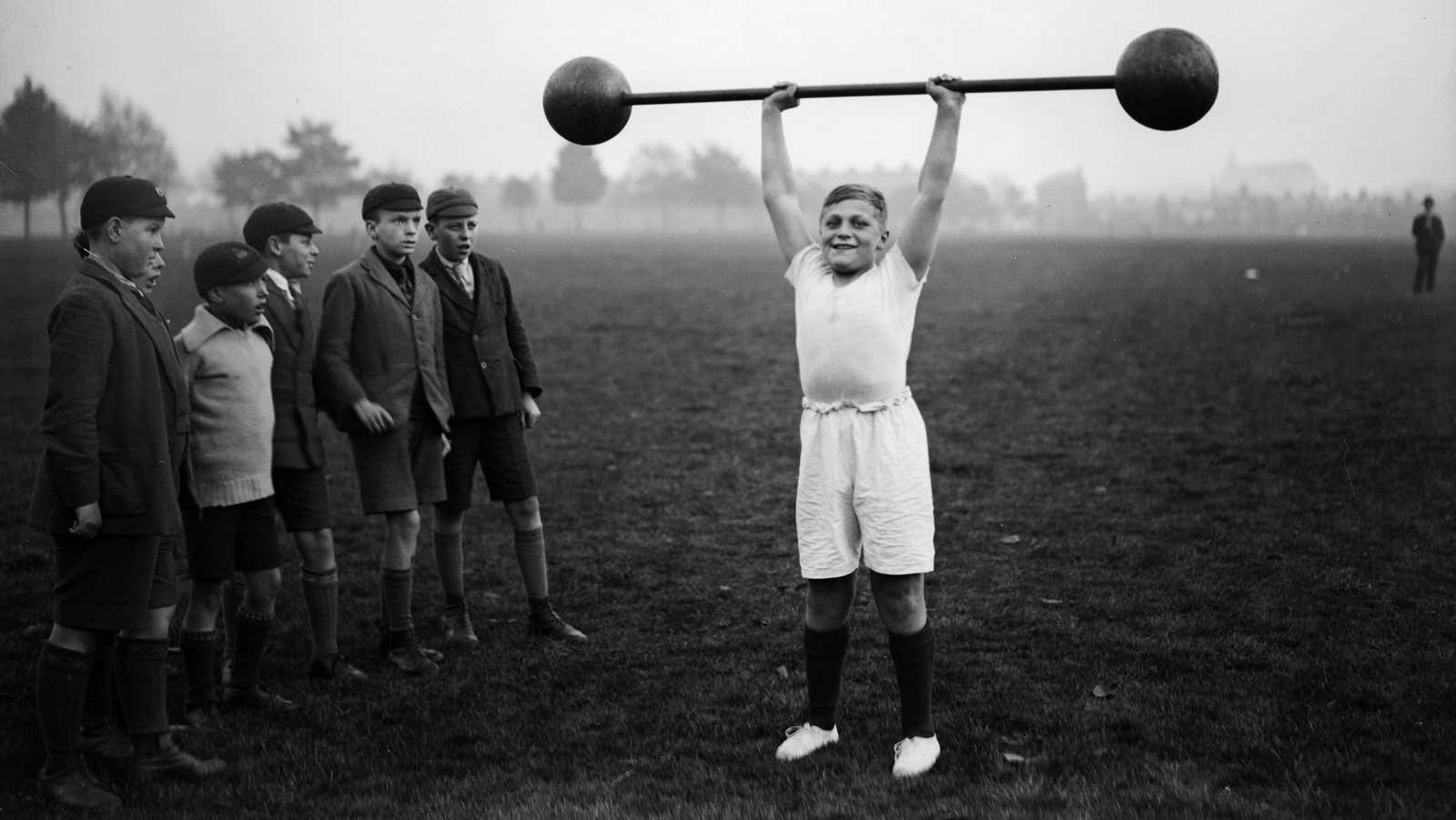How Young Are Children to Lift Weights?

We are used to seeing children engage in team sports such as soccer and baseball at a young age. And strength training, such as climbing the monkey grid, is a time-honored child’s entertainment. But for some reason, lifting weights seems wrong to many of us when children do it. But how are young people too young to lift the barbell?
Why strength training is important for kids
First, let’s talk about whether it makes sense for kids to train for strength. Weight lifting is just one form of weight training; others may include bodyweight exercises such as push-ups, or working with weights, machines, or other equipment. So strength training doesn’t just mean lifting weights.
The American Academy of Pediatrics, in its position paper on strength training, points out that strength is important for children’s health as well as their athletic performance (if they play sports). Strength training is also a gateway to spontaneous physical activity, according to several studies they cite, making it a great introduction to exercise for kids who don’t like running or other aerobic activity.
Rather than discussing the risks of strength training, the authors of the paper say, we must also consider the risks of non- strength training. Strength development makes children (and adults) less susceptible to injury in sports and in life, so we shouldn’t skip this important aspect of exercise.
Heavy weights are suitable for children
Experts have said in the past that kids can do strength training, but they’ve often shied away from recommending actual weights, or heavy weights in particular. For example, finding the maximum of one repetition was sometimes considered inappropriate for children.
But research shows that single repetition maximum repetition testing is perfectly safe for children when done properly with the right technique and under the supervision of a trained professional, such as a trainer. You shouldn’t let your kids just HAM in your home gym with heavy weights and poor technique – but that’s not good for adults either.
Will strength training stop a child’s growth?
No, but the myth did not appear out of nowhere. The growth of long bones (for example, in the arms and legs) occurs near the end of each bone, in the so-called epiphyseal or growth plate. It is possible, although rare, that this plate can be damaged so badly that the bone can no longer grow.
There are several reports of children who have injured growth plates, but according to an article the AAP cites at one repetitive highs , these injuries did not occur during safe, well-controlled strength training. The authors write:
This issue requires further study and evaluation, since most of the forces that children are subjected to during sports and recreation are likely to be greater in both exposure time and magnitude than when maximum strength tests are conducted under competent supervision and appropriate way.
In other words, lifting a heavy weight for a child’s body is no more difficult than what children are doing.
When can kids start strength training?
There is no specific age for starting resistance training, and the AAP recommends adapting training to the maturity and experience of the child. For example, once a child is old enough to play sports, they are old enough to do strength training. The AAP provides an example of one-legged jumping as a strength exercise that is doable and suitable for most 5 year olds. On the other hand, an inactive 14-year-old starts from scratch.
Bodyweight exercises (such as jumping) will be the first, and resistance exercises will follow later when the child is ready for them. But this is because you want the child to feel how to do the exercises and how to use good technique, not because there is a minimum age for any particular exercise.
How to keep kids safe when doing strength training
According to the AAP document, the components of a safe strength training program for children are very similar to those for adults:
- One or two days off a week
- Enough calories and fluids to support the work they do
- Coaching and supervision by people who are qualified to work with children in sports (in other words, good coaches and teachers)
The AAP recommends talking to your pediatrician before starting a strength training program if your child has high blood pressure or an uncontrolled seizure disorder. Children who have certain heart problems or who have been treated with certain chemotherapy drugs may also need to change their learning curve.
The AAP also emphasizes that children need time to master good technique and that they should use relatively light weights in the process — say, sets of 8-12 reps at 60% of their maximum. If they do well with this exercise, heavier sets with fewer reps may be appropriate. Sessions should be 20 to 30 minutes long and take place two to three times a week.
This should all sound familiar if you’re doing strength training yourself. I trained my 11 year old at our home gym and our program is very similar to what the AAP describes. (The 8-year-old and 5-year-old don’t exercise regularly, but I watch them and support them when they show interest.)
I have found that half of the planning is to keep the child interesting and fun. If my child hates an exercise or is not comfortable with it, we will find another exercise that works similar muscles. For example, he does goblet squats instead of back squats, but he also enjoys doing regular bench press. I notice him in every approach, observing his technique to make sure that he is not only safe but also lifts weights effectively. I want him to get stronger, but more importantly, I want him to feel comfortable in the gym and know that exercise is something enjoyable and rewarding. This is a lesson that he will remember for the rest of his life.